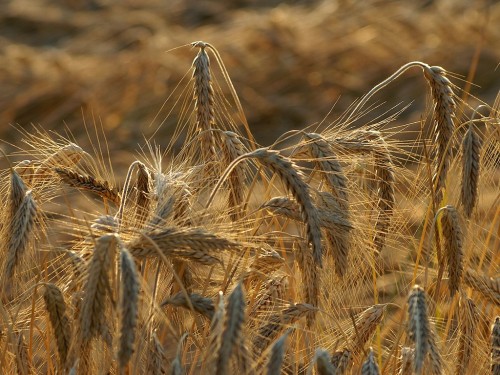The researchers found a statistical relationship between successfully domesticated plants, such as wheat, and plants that underwent a doubling of the genetic material. The results of the new study were published in the journal Nature Plants

Research at Tel Aviv University offers an innovative understanding of the domestication processes of agricultural species, hundreds of years after the last successful domestication. Domestication of species, i.e. the adaptation of wild species to human needs, has led over the years to the appearance of plants that are resistant to diseases, to the elements, have a long shelf life, etc. These goals are becoming more and more important with the population growth and with the decrease in the amount of available natural resources.
The results of the study, conducted by Dr. Itai Miroz, Dr. Ayelet Salman-Minkov and Dr. Niv Sabat from the Plant Evolution and Bioinformatics Laboratory at Tel Aviv University, were published last week (Monday) in the prestigious journal Nature Plants, and offer new hope to modern agriculture, and hence to the menu of humanity.
Since the beginning of the agricultural revolution, and for the past 13,000 years, man has tried to cultivate and cultivate a huge variety of plants for his needs, but only a few of these plants have been successfully domesticated for agriculture. In recent centuries, despite all his scientific and technological achievements, man has not been able to domesticate any new species.
A new study at Tel Aviv University explains that this partial success of man is related to genome duplications that occur in plant cells: plants that have been successfully domesticated - such as wheat, potato, coffee and sugar - tend to be "polyploid plants", that is, those that leave their offspring with more than one set of chromosomes.
Most mammals, including humans, are "diploid", meaning they carry two copies of each chromosome. The human genome, for example, consists of 23 pairs of chromosomes. The genetic information is found in every cell in the human body except the sex cells, which contain a single set of chromosomes. But many plants are polyploid, meaning they carry many copies of the entire genome.
"In polyploid plants we find fours, sixes and even eights of chromosomes," explains Dr. Miroz. "For a century researchers have been trying to understand the evolutionary significance of this phenomenon, and despite many hypotheses and much research that has been done, the question of polyploidy remains an open question from a scientific point of view. It is not clear to us what the evolutionary advantages of inheriting additional copies of the genetic information are, so it is not clear to us why the plants invest the energy needed for genomic replication as part of the struggle for survival."
Dr. Miroz and his team have already proven in the past that polyploid plants replicate their genetic information as a response to stressful situations, i.e. to environmental stress. "When the plant is in danger, it 'gambles' and replicates its chromosomes," says Dr. Miroz. "The additional chromosomes allow a wider range of genetic inheritance, since each copy of the gene can differentiate into a different sub-function. This is a desperate attempt by the plant, which in most cases fails, to adapt its offspring to the environment."
In their new study, the researchers proved that at least in one case, this gamble of the plants pays off: human domestication. In the computational laboratory of Dr. Miroz, we built a database of countless groups of plants and their genomic data. Later, the researchers developed a computational algorithm that can identify which plants underwent genetic duplication during evolution, that is, became polyploid, in the last 20 million years.
"When we cross-referenced all this data with the list of plants that humans have domesticated, we found a clear correlative relationship," says Dr. Miroz. "We saw that 30% of the species successfully domesticated by man underwent genomic duplication, a significantly higher frequency compared to plants from the wild. This is true for plants such as wheat, potato, yam, coffee, sugar, peanuts, strawberries, cotton, tobacco. The list is long."
According to the researchers, these findings shed new light on the agricultural revolution. "In contrast to natural selection, human-artificial selection actually benefits polyploid plants. The multiplicity of chromosomes allowed a person to play with the properties of the plant and get the best out of them for his needs. Of course, it does not mean that our ancestors knew how to distinguish between plants that underwent genomic duplication and those that did not. Man has tried to domesticate plants at random, and these experiments have more often succeeded with the polyploid plants, to the benefit of man, and often against the natural selection of the plant. And maybe we are wrong: maybe it was man's attempts at domestication that exerted the environmental pressure on the plants, which led to the doubling of the genome and allowed man to play with them with great success. We still don't know what is the reason and what is behind it."
In addition to the historical conclusions, the new research by Dr. Miroz and his team also has implications for the future of domestication, and possibly the future of humanity's diet. "In the last hundreds of years we have not been able to domesticate any new species. Our research suggests that a new tool can be added to modern domestication: genomic duplication. Today we know how to multiply the genome and make plants artificially polyploid, which means that it will be possible to domesticate new plants and improve domesticated plants."
